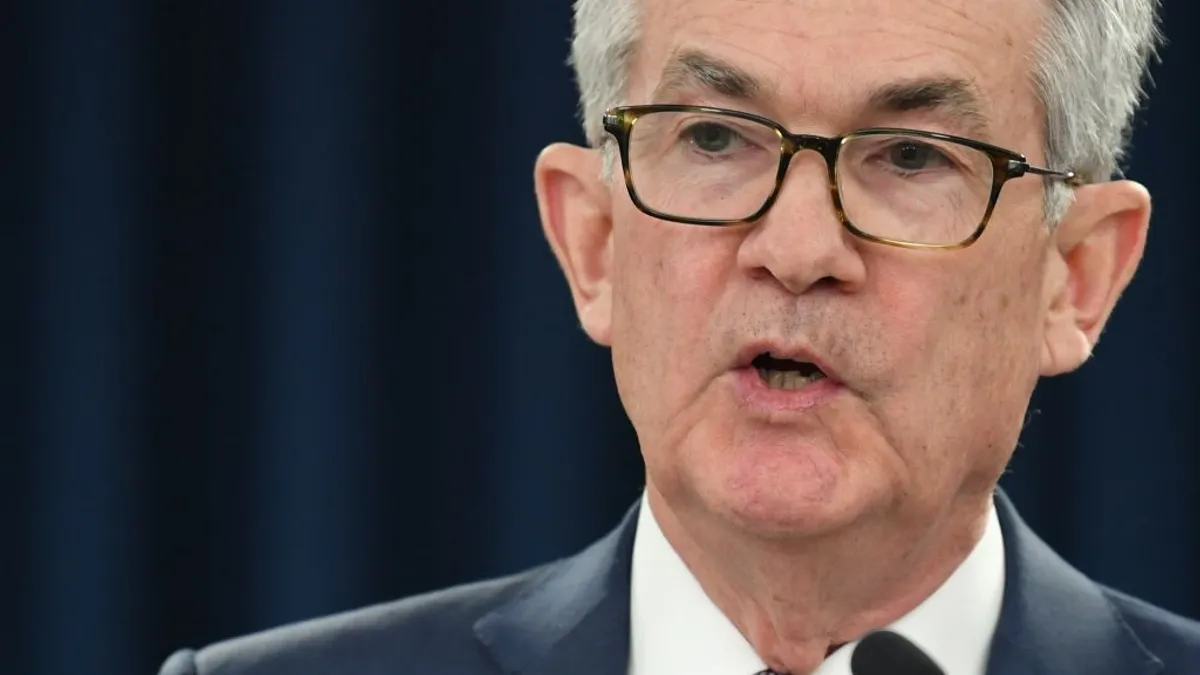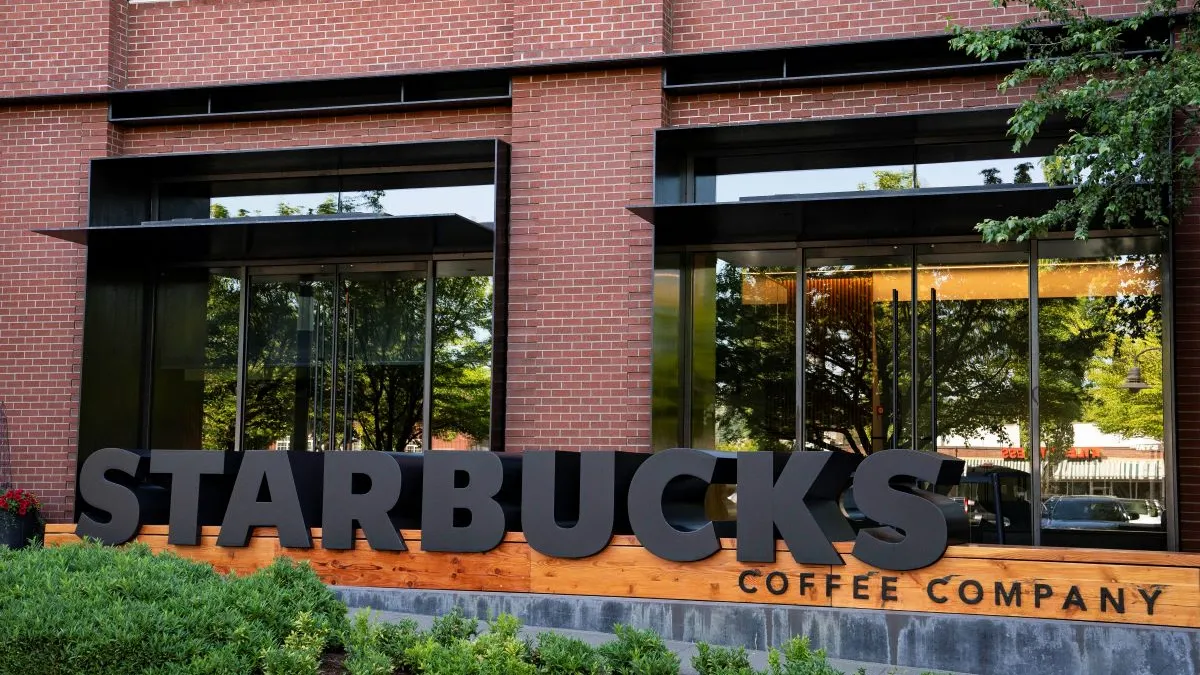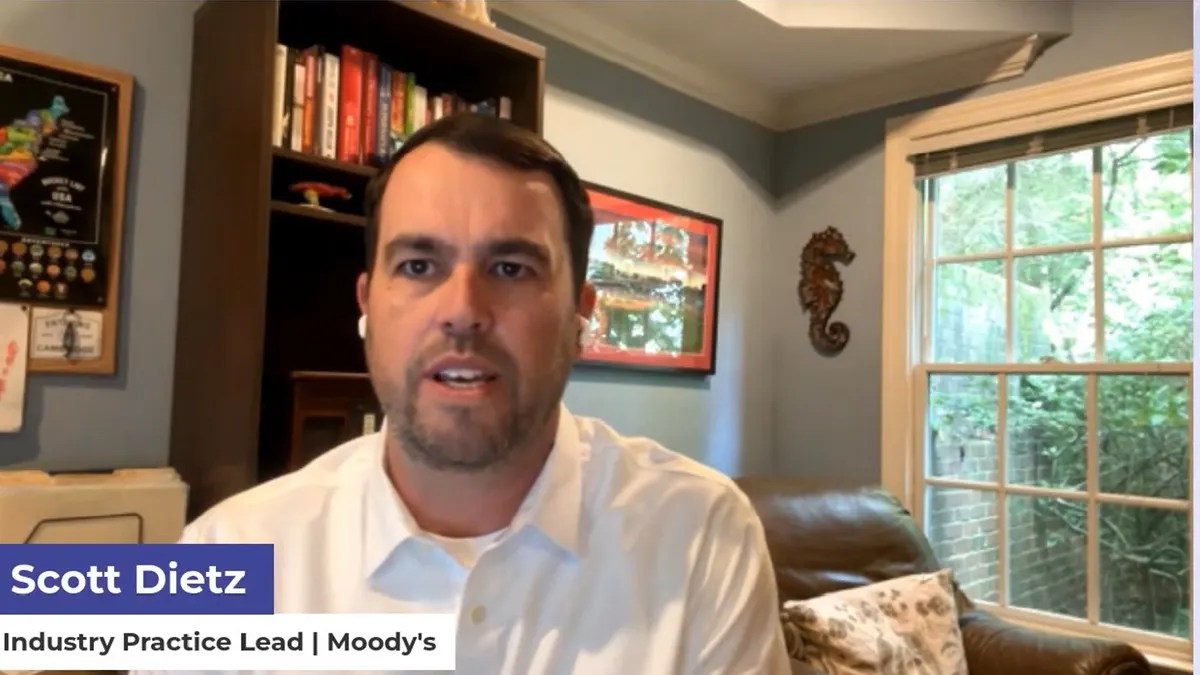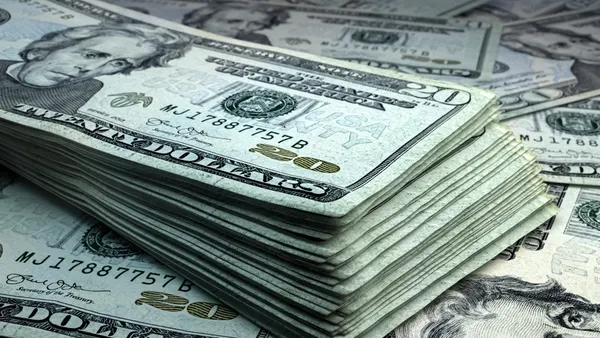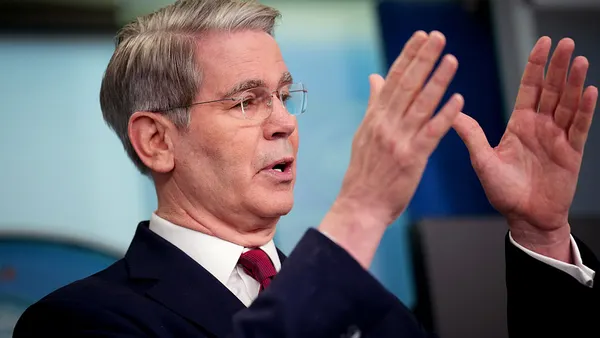Dive Brief:
- Federal Reserve Chair Jerome Powell on Friday cleared a path for a reduction in the benchmark interest rate next month, flagging weakness in the labor market while cautioning that tariffs may fuel sustained price pressures.
- Powell said that the Fed confronts limited policy leeway as it seeks to curb inflation, which persists above its 2% target, while ensuring that a slowdown in hiring since May does not collapse into widespread unemployment.
- “Downside risks to employment are rising,” Powell said in a speech. “If those risks materialize, they can do so quickly in the form of sharply higher layoffs and rising unemployment.” At the same time, Powell said that “near term risks to inflation are tilted to the upside” and may intensify if tariffs spur a lasting inflationary spiral.
Dive Insight:
Powell in his speech voiced more concern about the labor market than during a July 30 press conference, which followed a decision by policymakers to override two dissenting votes and hold the federal funds rate at a range between 4.25% and 4.5%.
At that time Powell described the labor market as “solid,” citing an unusually low unemployment rate of 4.2%. Most Fed officials aligned with his view of the job market and expressed more concern about persistent inflation, according to minutes of the policy meeting released on Wednesday.
On Friday, however, Powell highlighted “downside” risks to employment, noting that U.S. payrolls increased on average by just 35,000 each month from May through July compared with an average monthly gain of 168,000 last year.
“This slowdown is much larger than assessed just a month ago,” Powell said, highlighting that policymakers held borrowing costs steady on July 30 without knowing the full extent of labor market weakness since May.
Powell also noted that both the supply and demand for labor are declining, as stricter immigration shrinks the labor pool and as companies forgo hiring in response to the uncertainty from Trump administration shifts to regulation, trade, fiscal and other policies.
The unusual pattern in labor supply and demand suggests that risks to employment are rising, Powell said.
“With [monetary] policy in restrictive territory, the baseline outlook and the shifting balance of risks may warrant adjusting our policy stance,” he said.
Powell’s comments prompted traders in interest rate futures to increase the probability that policymakers will ease monetary policy next month. They set 85.2% odds of a quarter-point cut at the two-day gathering ending Sept. 17 compared with 75% odds on Thursday, according to the CME FedWatch Tool.
Powell “was more dovish than we and markets were expecting,” economists with Bank of America Securities said in a note. “The burden of proof is now clearly on the data to prevent a September cut” in borrowing costs by the central bank.
“Powell was clearly spooked by the downward revisions to payrolls, as there haven't been other major dovish developments since his hawkish July presser,” they said, referring to reductions this month to hiring data for May and June.
While spotlighting the softening labor market, Powell did not downplay the risks of higher inflation.
Policymakers face “a challenging situation” as they confront both the likelihood of higher inflation and “downside” risks to employment, Powell said.
Based on recent data, the personal consumption expenditures price index excluding volatile food and energy prices likely rose 2.9% last month, well above the Fed’s 2% long-term goal, he said. Policymakers prefer to track price pressures using PCE.
“The effects of tariffs on consumer prices are now clearly visible,” Powell said. “We expect those effects to accumulate over coming months, with high uncertainty about timing and amounts.
“The question that matters for monetary policy is whether these price increases are likely to materially raise the risk of an ongoing inflation problem,” Powell said.
The impact of import duties may be comparatively brief — a one-time jump in prices, he said, while cautioning that the cost of tariffs will take time to pass through supply chains and distribution networks.
“It is also possible, however, that the upward pressure on prices from tariffs could spur a more lasting inflation dynamic, and that is a risk to be assessed and managed,” Powell said.



